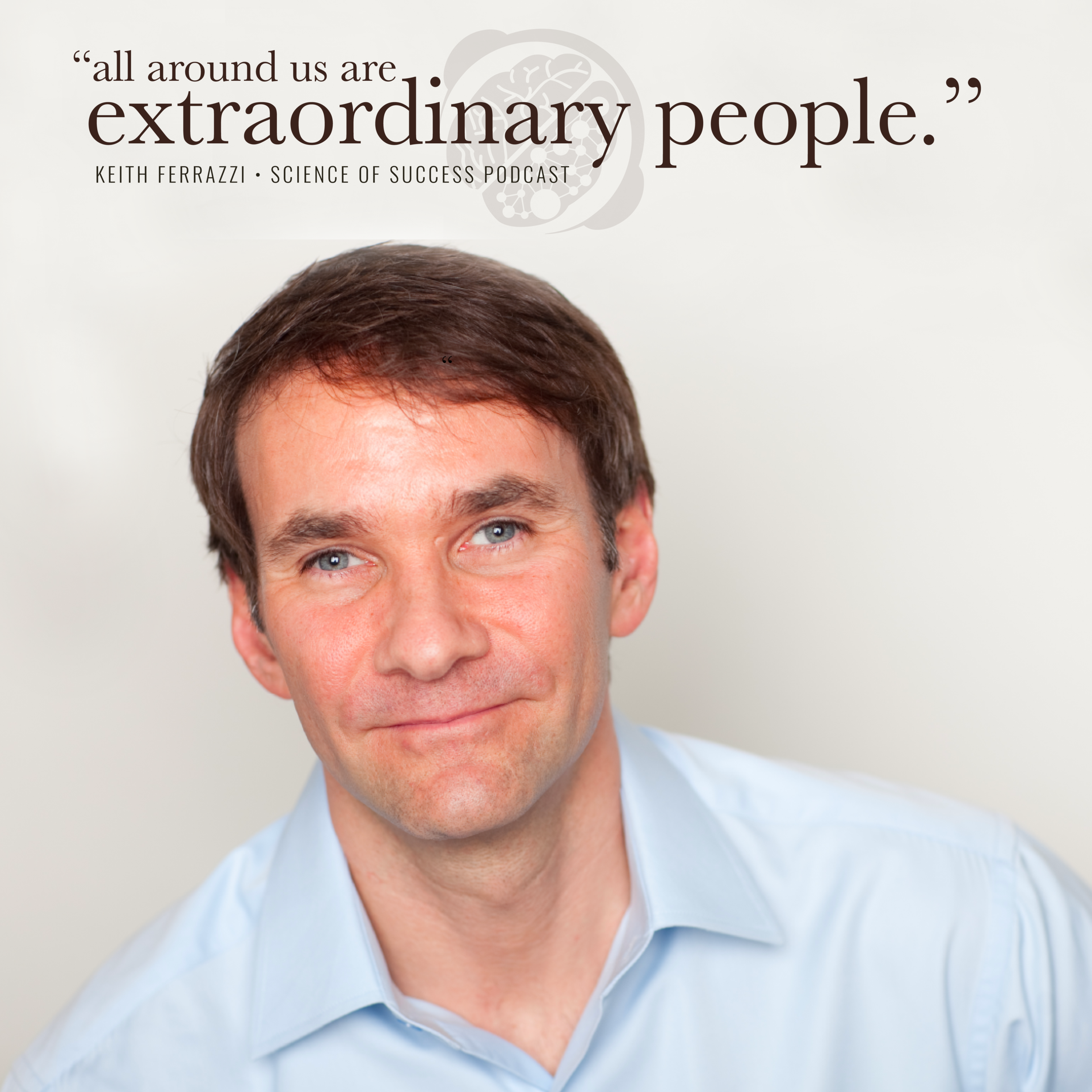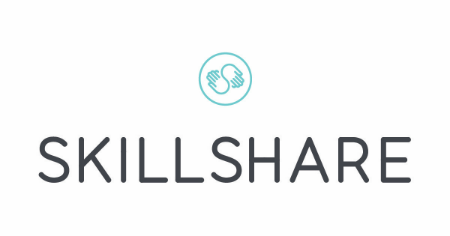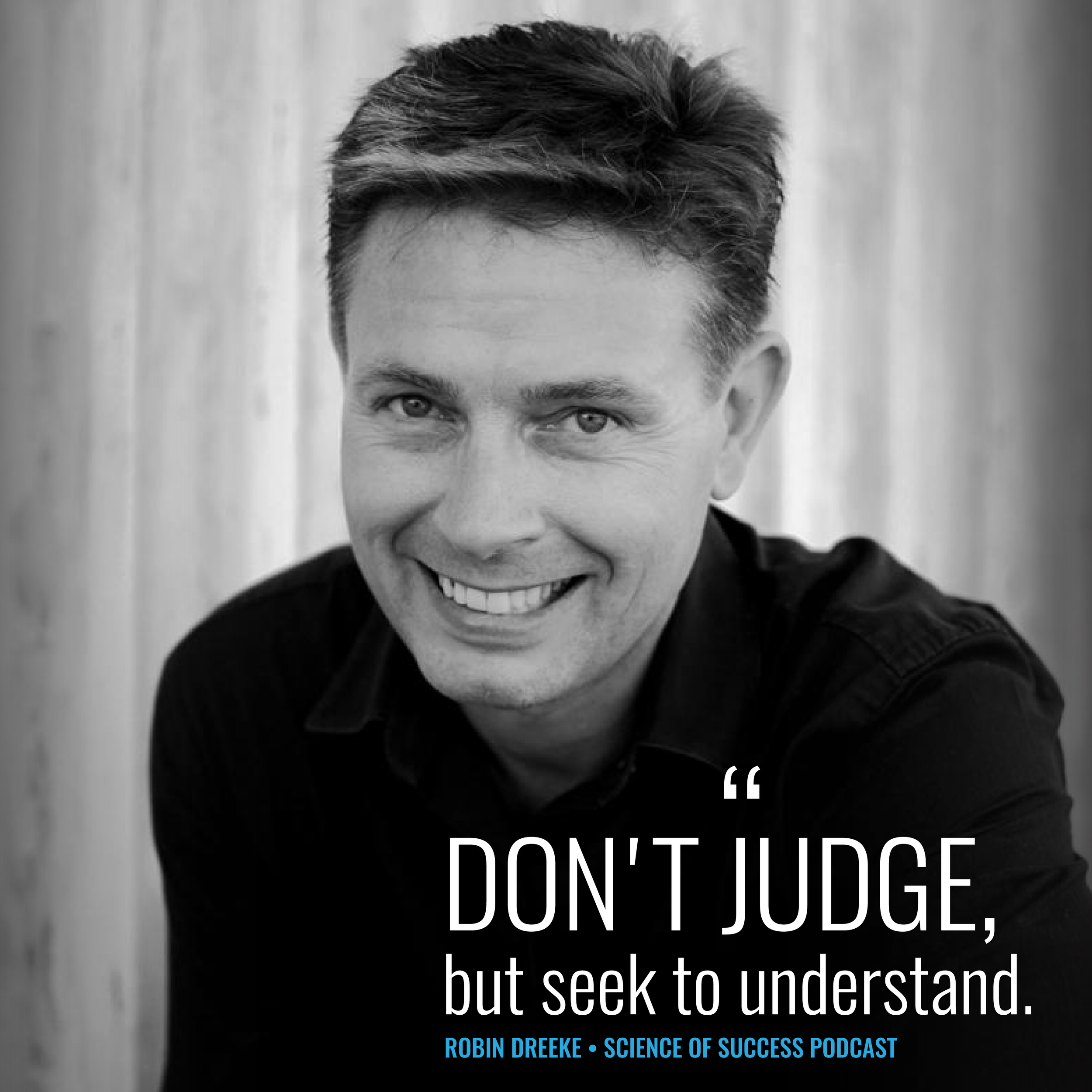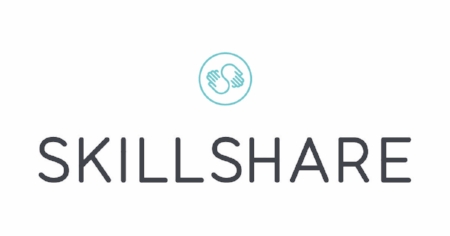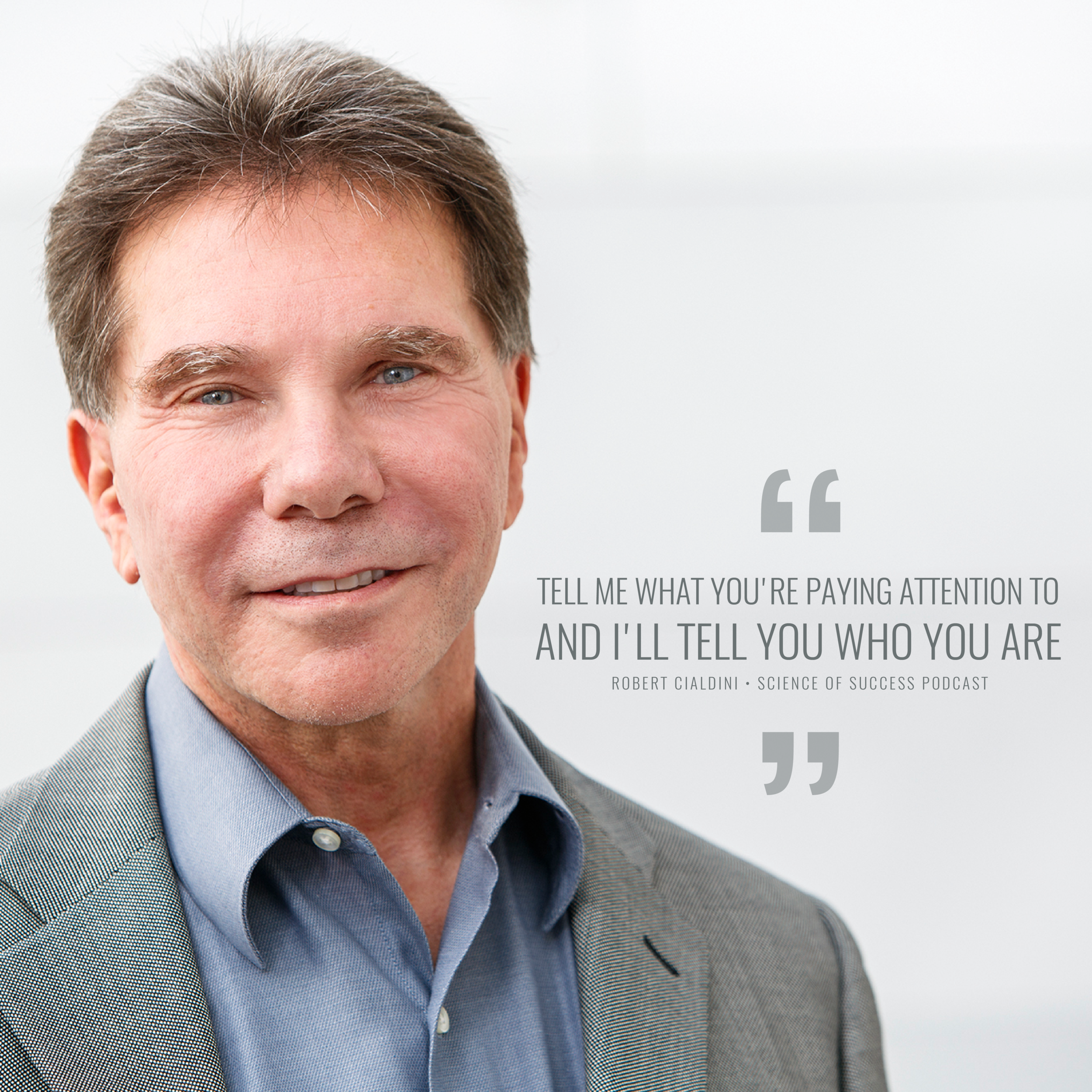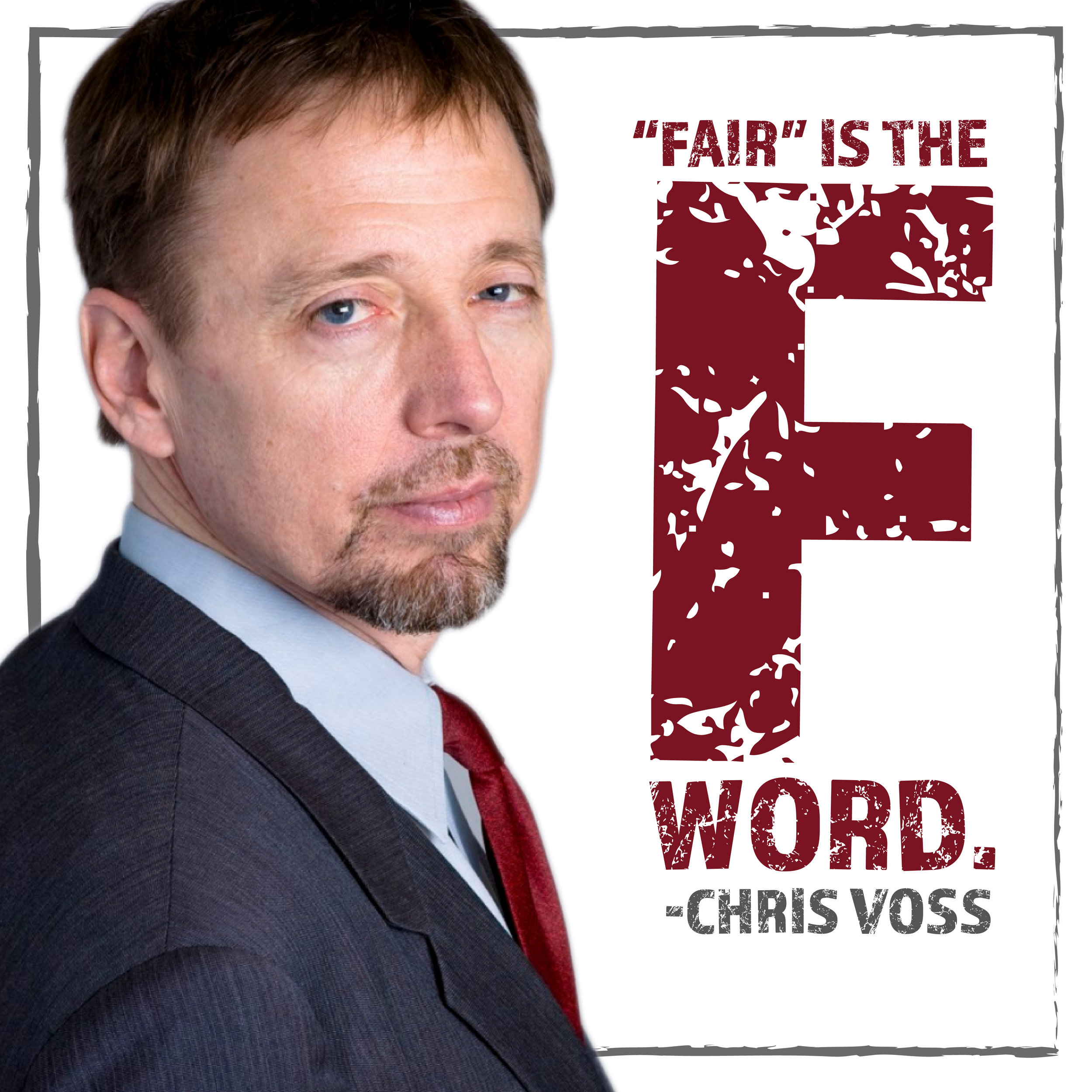The Scientific Difference Between Female & Male Brains with Dr. LouAnn Brizendine
In this episode we discuss the the male and female brains. Are they different? If so, what are the differences and do they matter? We look at the science behind all of this and unlock key insights into how you can improve your health, happiness, and relationships with by using a few simple strategies with our guest Dr. Louann Brizendine.
Dr. Louann Brizendine is the Founder of The Women's Mood and Hormone Clinic and a neuropsychiatrist at UCSF. She is the author of the New York Times best-selling books, "The Female Brain" and "The Male Brain" and executive producer of the 2017 movie, The Female Brain. She has served as faculty at both Harvard and UCSF and her work has been featured in The Harvard Business Review, The Guardian, and much more!
How do we use science of a decision-making framework?
Should we stop using science to shape our decisions because it gets things wrong?
Why do scientists and experts often hedge their bets when citing evidence and research?
Can we believe Science? Is science useful or not?
Don’t throw the baby out with the bathwater - science and give us really actionable and useful information starting today
The process and the progress of science is constantly questioning and constantly testing your assumptions - this is how you move towards the best answers and objective truth
The male and female brain are more alike than they are different, but they do have differences
Starting as early as eight weeks of fetal life, the male’s tiny testicles start to pump out testosterone that shape substantial changes in the male’s brain vs the female’s brain
The biology is straightforward - males and females have different brains
The major differences in the male and female brain have to do with reproduction
Puberty impacts males and females differently, and shapes their brains and behaviors in a number of ways
From age 11 to age 15 - a man's testosterone levels spike by 25x
How much of our gender roles are a result of culture, parenting, and biology?
“Relationship play” vs “rough and tumble play” for young boys and girls
Is the debate on nature vs nurture dead?
These behavioral patterns and traits are like a standard distribution that mostly overlap, but do have differences
Does this research about the human brain reinforce gender stereotypes and biases?
What is ‘daddy brain’ and how does it affect men?
Testosterone decreases by 30% for about 6 months
This triggers the male brain to be more protective and more nurturing
You can hear infants cry from much further away
Video games impact the male brain by tapping into your search for mastery and flow
How do we shape or change our behavior as a result of our different brains?
Other people are different from you - they think differently!
Why offering people advice or solutions instead of validating their feelings can often be the wrong strategy
If you’re missing the emotional component when to try to influence people, you’re missing a key piece
Homework: For men - say “Honey, I know how you feel” and then pause
Homework: For women - Men’s testosterone levels are 10x more than yours, that means your partner is (if you’re the same age) 3x more sexually interested than you are
Thank you so much for listening!
Please SUBSCRIBE and LEAVE US A REVIEW on iTunes! (Click here for instructions on how to do that).
This Episode of The Science of Success is brought to you by our friends at Skillshare!
Skillshare is an online learning community tailored for creators and doers! With more than 25,000 classes in design, business, and more! You’ll discover countless ways to fuel your curiosity, creativity, and career. Take classes in everything from social media marketing, mobile photography, creative writing, or even illustration.
You can join the millions of students already learning on Skillshare today! Right now Skillshare is offering our listeners unlimited access to over 25,000 classes for two months absolutely free!
That’s two months of unlimited access to all these amazing resources absolutely for free! Just got to www.skillshare.com/success and get started today!
This week we’ve been really loving Skillshare's classes on business and entrepreneurship. We're always on the lookout for new strategies, tactics, and ideas to grow our business and Skillshare has classes from some of the best in business across many industries!
Whether you’re looking to discover a new passion, start a side hustle, or gain new professional skills, Skillshare is here to keep you learning, thriving, and reaching all your goals!
Happy Learning!
Want To Dig In More?! - Here’s The Show Notes, Links, & Research
General
Dr. Brizendine’s Website
Dr. Brizendine’s Facebook
Dr. Brizendine’s LinkedIn
Dr. Brizendine’s Wiki Page
Media
[Blog Article] Carl Sagan’s Cosmos, Conciousness, Venus Colonies and More by Matt Bodnar
[Article] Simply Psychology - “Pavlov's Dogs” By Saul McLeod
[Article] “Eleanor Maccoby: How Much Do Parents Matter? Reading and Misreading Behavior Genetics” By Christine VanDeVelde Luskin
Article directory on Huffpost
ABC News - Louann Brizendine: 'The Male Brain'
[Article] The Guardian - Do women really talk more? By Stephen Moss
[Article] Booktopia - Nature v Nurture – Louann Brizendine’s take on it all by Toni Whitmont
[Article] HBR article - One Reason Women Don’t Make It to the C-Suite by Louann Brizendine, MD
[Podcast] Art of Manliness - #410: The Male Brain
[Podcast] Live Life Better - LouAnn Brizendine
[Podcast] Human Current - Episode 59: A Closer Look At The Female Brain
Accompanying Blog post: Dr. Louann Brizendine on Modern Life & the Female Brain by Haley Campbell
[Podcast] Podfanatic - Episode: Brizendine, Dr. Louann — The Female & the Male Brain: There is a Difference
Videos
LouAnn’s Youtube Channel
Philippe SHOCK Matthews - Dr. Louann Brizendine on the Male HATE Brain
The Female Brain by Louann Brizendine - Book Review
The How Movement - Ghetto Stress on the Female Brain - Dr Louann Brizendine
Louann Brizendine | Talks at Google (
One Mind - The Female and Male Brains in Psychiatry: Dr. Louann Brizendine
TED Talks - Louann Brizendine at TEDxBerkeley
The Female Brain (2017 Film Adaptation)
Books
[Book] The Female Brain by Louann Brizendine
[Book] The Male Brain: A Breakthrough Understanding of How Men and Boys Think by Louann Brizendine
Misc
[Wiki Article] Couvade syndrome
US News Health Profile - LouAnn Brizendine
LouAnn Brizendine IMDB page
Episode Transcript
[00:00:04.4] ANNOUNCER: Welcome to The Science of Success. Introducing your host, Matt Bodnar.
[0:00:11.8] MB: Welcome to the Science of Success; the number one evidence-based growth podcast on the internet with more than three million downloads and listeners in over a hundred countries.
In this episode, we discuss the female and male brains. Are they different? If so, what are the differences and do they matter? We look at the science behind all of this and unlock key insights into how you can improve your health, happiness and relationships by using these simple strategies with our guest, Dr. Louann Brizendine.
I’m going to tell you why you’ve been missing out on some incredibly cool stuff if you haven’t signed up for our e-mail list yet. All you have to do to sign up is to go to successpodcast.com and sign up right on the home page.
On top of tons subscriber-only content, exclusive access and live Q&As with previous guests, monthly giveaways and much more, I also created an epic free video course just for you. It's called How to Create Time for What Matters Most Even When You're Really Busy. E-mail subscribers have been raving about this guide.
You can get all of that and much more by going to successpodcast.com and signing up right on the home page, or by texting the word smarter to the number 44-222 on your phone. If you like what I do on Science of Success, my e-mail list is the number one way to engage with me and go deeper on what I discuss on the show, including free guides, actionable takeaways, exclusive content and much, much more.
Sign up for my e-mail list today by going to successpodcast.com and signing up right on the home page, or if you're on the go, if you're on your phone right now, it's even easier. Just text the word smarter, that's S-M-A-R-T-E-R to the number 44-222. I can't wait to show you all the exciting things you'll get when you sign up and join the e-mail list.
Have you ever desperately wanted something and then as soon as you get it, or as soon as you achieve it, you seemingly toss it aside and move on to the next thing? In our previous episode, we explored the powerful brain science behind why this happens. We looked at dopamine; how it shapes your behavior, why it causes you to do certain things and motivates you to achieve new things, but also why it can be dangerous if it becomes too imbalanced. We shared strategies for enhancing and harmonizing with your brain’s dopamine circuitry and much more in our previous interview with Dr. Daniel Z. Lieberman. If you want to finally break free from the cycle of chasing your tail, listen to that episode.
Now, for our interview with Dr. Brizendine.
[0:03:09.8] MB: Today, we have another unique guest on the show, Dr. Louann Brizendine. Dr. Brizendine is the Founder of the Women's Mood and Hormone Clinic and a Neuropsychiatrist at UCSF. She's the author of the New York Times bestselling books, The Female Brain and The Male Brain, and the executive producer of the 2017 movie, The Female Brain. She has served as faculty at both Harvard and UCSF and her work has been featured in the Harvard Business Review, The Guardian and much more. Dr. Brizendine, welcome to the Science of Success.
[0:03:40.7] LB: Hi, Matt. Thanks for having me.
[0:03:42.8] MB: Well, we're very excited to have you on the show today and to really explore some of the topics that you've researched and written and spoken about. Before we get into the meat of your work, I'd love to start with something that we were hashing out and just started to have a really interesting conversation about in the pre-show that I think is really relevant for the listeners. This is the idea of science as a decision-making framework. How do you think about how we integrate and use scientific knowledge to make better decisions?
[0:04:11.8] LB: Well, I think one of the things that when you're in the scientific world, you're so cognizant of the fact that everything that we know today – you can ask me a question today, what as of today do I know to be true? I can only tell you what I know to be true today, but I can also tell you about well, we're not quite sure about this and we're not quite sure about that, so we're doing more work on these things, so that maybe five years from now, we'll have some different answers for you.
It's always this issue of hedging your bets, even about what you know to be true today. In science, I think it's confusing sometimes to the public because we are as scientists, always hedging our bets. We also do know three or four things that are lurking in our peripheral vision that may do something to change our theories a bit, or to change what we think is scientifically true a bit.
We're always a scientist holding what we know is true today, but that tomorrow it may not be quite as true. For the public, it feels like well, if something is hedgy, if someone's hedging on, an expert's hedging on it today, what can we really believe? Is science really true, or science not true? I think that's an unfortunate conclusion that sometimes the public makes. As you throw the baby out with the bathwater, you don't focus on something that can be actionable, some really important piece of scientific information that we know to be say 98% true today that you could take in your life and make it actionable and really help yourself.
I encourage your audience to take some of the scientific truths of today for just what they are. They are the truths of today, which doesn't mean that we're not going to have modifications of them in coming years.
[0:05:59.6] MB: What would you say to somebody who thinks to themselves, or even has a friend or family member who says something like, “Well, science gets stuff wrong all the time. I'm just going to ignore it, or I'm just going to go with my gut, or I just don't believe that”?
[0:06:13.6] LB: I would just say that of course, science gets things all wrong all the time and they get many things wrong. A lot of things they of course get right, but the process and the progress of science is constantly questioning, okay, is this thing that we just showed in this experiment, okay, how true is it? Is it true in all situations? Let's do another set of 10 experiments to test that out to see if that theory is true in other situations.
Science is always constantly – the whole goal of science is to test, test, test to make sure that what we think is true really is true, so we are constantly questioning ourselves as scientists, questioning our theories. That is just part of the progress of science, but it is the heart of the scientific process itself.
[0:07:00.1] MB: We're getting out on a tangent a little bit, but to me, somebody like a Carl Sagan is such an intellectual hero of mine, because he really popularized and taught and shared people the power of the scientific method and constantly questioning yourself, constantly testing your assumptions, and how that can be a very useful and impactful way to think about the world and to think about your life.
[0:07:27.2] LB: Absolutely. I think that Carl Sagan is also a hero of mine, because of the way of thinking about science and the scientific method. I think this is why it's important for all of us to have at least a little bit of scientific learning through different parts of school, is so that we understand how scientists think. Scientists never claimed to have the absolute once and for all truth about something. Scientists are always experimenting and trying to move the ball further and further down the field.
[0:07:59.5] MB: Ultimately, that that questioning and that constant testing gets us to stronger answers and moves us towards a more robust understanding of what is really true.
[0:08:11.9] LB: Absolutely. I think, especially I'm so aware of that in my field, which is looking lots at the brain connections and the brain aspects of gender differences in the brain, because the male and female brain are more alike than they are different. After all, we are the same species, right Matt?
[0:08:33.6] MB: I think so. No, I’m just kidding.
[0:08:36.2] LB: Yes. There's so much involved in that. What we do know is that from the moment of conception, when that sperm enters the egg, if the sperm is carrying an X, the baby will be female. If it's carrying a Y, the baby will be male. From the moment of conception onwards, we are gendered, if you will. Well, you're going to be male or female. At eight weeks of fetal life, the male tiny testicles start to put out huge amounts of testosterone that marinates the brain and body of the male fetus changing the brain and the body into male. By the time we're all born, we're either born male or female.
That doesn't mean that we're obviously not in different species, but we are a version of humanity. You end up being a male version of humanity, or a female version of humanity. Most everything works just about the same, but there's a whole bunch of different things in different parts of the circuits the area for sexual pursuit, is about two times larger in the male brain, right? From the get-go. That's made during that fetal life and is then triggered by all of the testosterone surge at age 10, 11, 12, 13, 14, 15. In males during male puberty, that whole system is turned on like a light bulb.
It's important to know that that's completely the natural, normal unfolding of the male sex. That's how you guys are wired. In females, we are developed from that moment of conception until we're born without testosterone. The absence of testosterone lets our circuits develop in the female, or the default mode. The default mode in a way is the female circuitry. Then of course during puberty, we get all the estrogen surges and the progesterone surges and we shape our circuitry, our behavior, our motivations are tilted in the female direction.
These things are built on those principles. Those are the principles that we understand that we know and those haven't changed really from our understanding from the last 50 years. That different aspects of it of course and new elements of how that happens, in some ways in which it can be a bit different happen. The same-sex attraction that happens in – if you're going to be same-sex attracted, that usually happens in puberty for both males and females, that unfolds in that direction.
We don't understand much about how that happens for different brain circuits, but we know that all of the aspects of who we're going to be sexually attracted to happens usually at the unfolding of puberty.
[0:11:30.4] MB: Before we dig into some of the puberty effects on the brain, I want to come back to this fundamental premise and perhaps even explore a little bit, or hear about your journey and your story of how you came to some of these conclusions that the male and female brain are in fact different.
[0:11:48.8] LB: Right. I just laid out how the science goes, how the biology and the unfolding of if you have a Y-chromosome, you're going to develop in the male direction, if you have an X, you're going to develop in the female direction. Now that says something about how your brain circuits and your body and your genitals, how they develop, that's just biology. I mean, that's how the biology unfolds.
I think that what happens is that many people then it's hard to take that into other realms. Like oh, does that mean girls aren't good at math and that boys are better at math? Basically, both brains can do the same kinds of things. There's an equal number of high, very high IQ females, as there are high IQ males. The aspects of intelligence and the aspects of other parts of how the brain functions aren't different. The male and female brain are like I said, they're more alike than different. After all, we are the same species.
The parts that are different have to do with reproduction. Basically, the means of reproduction, or the seeking out a sexual partner to reproduce, those are made in different categories; male and female. That's how we all get started in life. That doesn't necessarily mean that the only thing we are is male or female. I'm a female, who happens to really like science. Matt, you may be a male who – maybe I don't know, maybe you like to – maybe you like costumes, or fabrics, I don't know. I mean, it doesn't – whatever it is that you happen to be interested in, doesn't necessarily only have to do with which sex you are.
[0:13:31.6] MB: Tell me more about these changes, or these differences in the brain and how it impacts male and female behavior, especially around reproductive behavior.
[0:13:44.7] LB: I think one of the things that I like to talk about and I talked a lot about that in my book, The Female Brain, which I think when a lot of guys read that, they say that – especially chapter 2, which is the teen girl brain chapter, really explains a lot about what it's like to be a teen girl in terms of looking at it from the brain perspective.
For example, as the estrogen-progesterone cycles start to happen after a girl goes through puberty, all kinds of things get stimulated in her brain that are – she gets very interested in her appearance. I mean, you probably know this. Both of you guys know some girls in your life that are like, they're really into dressing a certain way, they want their shoes to be a certain way, their hair, their makeup.
I can remember myself at that age, I would read. In those days, it was the Seventeen Magazine, or all the girls’ magazines. I wanted to know what it would be like. I want to look like – I want to be hot. I want to be, have males be attracted to me and what was I going – how did I do that? How did I figure that out?
Girls are trying to figure that out all the time, because part of their biology and their hormonal triggering of the motivation, the behavioral motivation in their brain to look hot and attract the opposite sex, if they're opposite sex attracted, is basically to spend time on their parents; figure out what that's going to be like, how you're going to get guys to be attracted to you is the subtext of that urge and that motivation.
I mean, it's almost like the hormones that trigger your hunger. These things are built-in biologically. We don't think that they are. We think, oh – I mean, I know a lot of guys that I've talked to, they're in the teenage age group. They feel like – and I have a 29-year-old son, so he goes just like, “Mom, I just can't stand all these girls with all this makeup and all the time they spend on this and their hair.” He says, “Why are they doing that for? It doesn't make them look any better.” That's from a guy's perspective.
From the woman's perspective, it's very different. Trying to attract male attention is how the female brain is wired during those stages of a female's life. On the flipside, the male at age 13.5 is the average age of male puberty. We measure that by the age at the first wet dream is 13.5. We know that all the systems are working by then. Girls are about age 12.1 if they're Caucasian, Asian girls are a little later, like about age 13, African-American, Hispanic girls are a little bit younger, more a bit like 11.
Female puberty happens say between somewhere between ages 10 and 13. Their circuits are going to light up in wanting to be spending more time being attractive. The males on the other hand, once their testosterone goes up from about 15 or 20 up to a level of 300-400. Of course, by the time you're about 19-years-old, your testosterone level can be up to the level of 800 to a 1,000. It really is a very rapid curve straight up during ages 13, 14, 15.
That turns on all of these circuits that I call that area for sexual pursuit. Guys are like, they're tracking things, every pair of breasts that walk by catches their attention, all kinds of sexual interest all over the map for boys. Their thoughts of sex come rapid-fire. Anything can make them think of sex. That's a teenage boy’s motivation, interest in their biology is all hooked into that as it were. That's how the hormones and biology are motivating their behavior.
I mean, it's not the only thing they're doing. It's not that they are not going to do their homework, or they're not going to practice whatever sport they're doing, but they are going to have this other thing. It's almost like having – you walk into a sports bar and the TV is always on in the background. It's this whole area for sexual pursuit is always on in the background after a male goes through puberty. That's just how you’re normally naturally wired.
I think that it's interesting. When females – when girls find that out, you know that that's what's going on in the male brain, they're quite shocked actually. I think when guys figure out what's going on in the female brain at their stage, it's also very interesting, especially when you have your first girlfriend and you make it into the areas of the other area I study which I study PMS and kinds of the mood issues of the menstrual cycle is another one of my areas of expertise.
There's a whole lot of interest, I think in young males trying to figure out what that's about since the female brain and their hormones changes up to 25% a month, certain areas can go through a lot of hormonal structural changes.
[0:18:57.7] MB: During this onset of puberty, these hormone levels are spiking to, forgive me for probably botching the numbers, but I mean, it's 10X, 20X, 50X, huge spikes, right, for both men and women of different hormones.
[0:19:12.4] LB: Yeah. I have a graph on page 33 of my book, called the male brain, that takes the male from age about 11-years-old to 15. Yes, that curve goes straight up, like times 25. It's just a 25-fold increase in testosterone levels. The testosterone, it's going to be making male beards grow, hair grow, makes your Adam's apple grow larger, your voice is going to change and get deeper, penis gets larger, testicles get larger, all the male sexual characteristics get larger; your muscle mass starts to change a lot, because testosterone is a huge growth factor for muscle. Males are just turning into the male body that we all know. That's happening at that age.
[0:20:02.1] MB: How did your research change, or shape your perceptions on whether or not, or which gender roles are socially constructed and which are more biologically skewed?
[0:20:14.4] LB: That's a great question, because that gets us into to the taking it out somewhat of the biology, but not as much as you might think, but putting it into. How much is the construction of which gender we are happen by the way we’re raised, or the way culture raised us? Like the phrase, boys don't cry, right? They're like, man up. Boys don't cry. When you say that to a four-year-old who's just falling down on the soccer field and rip the skin off his knee, that is a cultural overlay on to telling that little boy what's acceptable and what's not acceptable based on his gender.
Or just maybe allowing, encouraging little girls, or comforting little girls more when they cry, let's say. The meaningfulness of those kinds of behaviors towards children based on which sex they are don't go unnoticed. We all will respond to what we're encouraged, or discouraged from doing. You look at three and four-year-old boys in preschools, a woman named Eleanor Maccabee down at Stanford worked for about 40 years in the preschool setting, taking detailed research of all the behaviors of the boys and girls who played in their play groups.
Little boys would very quickly start to – they would sit down with the little girls maybe in play, what's called this role play type of thing, where the little girls say, “Okay, you be the daddy and I'll be the mommy, or you'll be the doctor and I'll be the patient.” Little boys will sit and go through maybe one turn or two of that, and then they're up and wanting to run and do stuff with the other like, “Come on guys. Let's go get them.” They want to fight the enemy.
These behavioral modalities, about 90% of little girls are more interested in what's called relationship play at that age, than little boys are. Little boys are much more interested in fighting the enemy and they get more interested in explosions and basically, having much what's called rough-and-tumble play. No one really taught them how to do this, it's been discovered, but this is just part of the way boys tend to be wired, or at least 90% of them. They are then culturally reinforced for that. Or maybe the 10% of little girls who prefer the rough-and-tumble play, they may be discouraged a bit from that.
I think the way things have changed in the last 25 years is basically having more allowances for just having the individual child develop along whatever path they choose, rather than trying to impose, or the cultural mandates on them of how a little girl versus a little boy is supposed to behave. That being said, those things that are culturally mandated either by your family, or by your school, or by your peers, or by your peers’ families, whatever the source of it is, don't go unnoticed. We start to craft who we are in terms of our personhood based on our gender by these experiences we have that will either provide us an outlet to be encouraged or discouraged from certain behaviors that are considered gender specific.
[0:23:29.1] MB: You made a comment and this might be pulling from the depths, and forgive me if this is out of left field. You made a comment in your Google Talk, which was some time ago. You said that nature versus nurture is dead, or something around that. I was curious. That particular line really stuck out to me and I wanted to know what you meant by that. I think it might fit into the context what we're talking about now. I'd love to hear you elaborate on it.
[0:23:53.6] LB: Exactly. I mean, the old theory was that everything was nurture and not very much was nature, right? That everything, that gender was completely socially constructed and that everything was based on nurture, whether you became a boy or a girl. Of course, the biology that I just told you about is very clear and that is nature.
The other piece that we also know is that all of the things that are the nurturing things we talked about, or the environment, or the cultural mandates about gender, those start to act also upon the brain. You're learning and behavior all start – if you're punished for crying as a little boy, then that becomes part of your inhibitory brain circuits. Your brain circuits start to shut down that behavior, shut down the – whenever you want to start to cry, you'll just start to shut that down. That is not just only a conscious decision, but your actual brain circuits start to develop in such a way that they will shut those behaviors down.
I mean, you can watch how – if you train dogs, right? You train animals and you basically have them rewarded or punished for doing certain things. It starts to become part of their brain circuit. That's why how you're nurtured, or how your culture mandates certain things, it be interwoven into the brain circuits, so that becomes nature. Nature and nurture are really not different. They are the same thing. That's why the nature-nurture dichotomy is dead.
[0:25:30.1] MB: Pavlovian conditioning is such a powerful mental model. It's really interesting to hear how it can play into childhood development and even gender roles to some degree as well.
[0:25:40.1] LB: Absolutely. I mean, part of that it's true for all of us. That's why really trying to enhance each individual's – to maximize each of our own creative and intellectual potential is what I think as a society, we are trying to work towards with all children. That would be certainly the ideal to work towards.
[0:26:01.8] MB: That's another point that you brought up earlier that I think is worth rehashing and bringing up is this idea that a lot of these behavioral patterns are more like a standard distribution, that have a lot of overlap with some differences. Each individual may be on one side of the other distribution and they may exhibit a lot of tendencies that may not, maybe atypical or different, but every individual was totally unique in the way that they interact with the world and their preferences, behaviors and that thing.
[0:26:32.3] LB: Exactly. I think in pie charts sometimes, because it's helpful to – The pie chart of me, who I am, when I was second, third grade, I really enjoyed – I would say I was more of a tomboy. That meant that I liked to go with the neighborhood boys next door and go out and hunt for lizards and snakes. I mean, I was into the reptiles. That was not very girly. I'm just not. I also had my dolls. I also had toys and I definitely liked fashion and I liked fabrics and liked designing clothes for my dolls.
Those were all parts of me and who I was. I always went – I was fishing with my dad from the time I was about three or four. I could put a hook into a fish. I could gaff a fish and unhook him, from the time I was pretty young. Those are things that were both because of my family of origin, but also because nobody told me I couldn't go hunt for lizards with the boys in the neighborhood, right? Those are parts of me that were maybe not – some of them might have been supposedly in the other category of being more boy things.
I think that everybody has – you may fit right in the median on some of your tendencies and you may fit two standard deviations off in other areas, which is that's not – that doesn't mean there’s anything's wrong with you. It's just how you as an individual and your particular genetics are wired.
[0:28:06.1] MB: This might be getting a little bit off-topic, but I'm curious, how have you dealt with people who would characterize your research as furthering gender biases?
[0:28:16.1] LB: Well, I can understand that if you just take it on a very simplistic superficial basis and not having read anything I wrote. I mean, if you just think it like, “Oh, someone talks about the male and female brain. That's just going to reinforce gender stereotypes and blah, blah, blah.” I can certainly understand it from that very superficial perspective.
On the other hand, I talk about – the stuff I talk about is just basic science of hormones, behavior and biological development. I think stereotypes are very dangerous actually. Some of the studies where they will read some girls that are maybe junior high, they'll read them a paragraph about how girls can't do math and all this stuff. Then they'll take another and then give them a test. Then they'll take another group of girls and tell them how girls are good at this and good at other things and can be good – Those girls, maybe they all have the same IQ and the girls who are told that girls aren't good at math will do badly on, or do worse on the test than the other girls.
That's one of those – I think a profound study that shows the negative aspects of stereotypes, of gender stereotypes. I think we all have to guard against gender stereotypes, racial stereotypes. All kinds of stereotypes are just – they're very offensive to the individual that you're trying to deal with, because that person, you have no idea who that person is, where they came from, what their background is, what their talent sets are. The reason brains like to deal with stereotypes, it's an ability to have shorthand. Our brain likes to be able to make up shorthand for something, so that we don't have to think too hard, right?
Every individual that you run across in your life, ideally you would take them as being someone you would just like to learn who they are about, what they're about, what their background is and you don't come to them with any stereotype. You just want to let them flower the way they are. That's my comment on stereotypes. I think all of them are bad.
[0:30:21.8] MB: I want to change gears radically and come back to something else you've written about, which is very relevant for me personally having a six-month-old, daughter which is daddy brain. Tell me a little bit about that.
[0:30:36.7] LB: I think that if you start with the phrase human brain, human parenting brain, the parent brain. I think that a lot of women, because we are the ones who carry the baby, birth the baby, breastfeed the baby, right? That's what's going on in your household right now. Fathers are really incredibly, even biologically involved. They basically have found that in the first – within the first two or three months of your partner's pregnancy, if you're living together in the same house, I think this may or may not be true if someone's spouse is away, say in Iraq or something.
If you're living with that person and you're the father of that child and your partner, your wife is pregnant, you start to have hormonal changes that you may or may not be aware of. I mean, you heard of couvade syndrome, or couvade syndrome, C-O-U-V-A-D-E. It's where the male gets basically the same appetite as the female and often gains up to 25 pounds during her pregnancy, because you're also eating for two, but it's thought to be pheromonal/hormonal. Male’s testosterone level drops about 20% to 30%. Your other hormone, which is called prolactin, P-R-O-L-A-C-T-I-N, prolactin. It means actually pro-lactation. It's the hormone that causes milk in the breasts.
Males also have it. We don't really know what it's doing in the male brain, or in the daddy brain, but it increases by 20% or 30% during the whole gestation of the – then after birth. Right at about six months, yours is starting to go back to your pre-levels. During that first six months of the baby's life, if you're living with that child, your testosterone level is still a bit low and your prolactin level is very high.
The thinking is that it's really triggering the male brain, the daddy brain to become protective and basically, to become parent. You've probably seen those studies where they measure the ability of the female brain to hear an infant crying. If the female has had babies before, if she's already had children versus someone who hasn't, she hears the babies, infants cry a lot more. It's a lot louder, it's a lot she wakes her up more, than a female who's never had children. If you take a male who's never had children, he hardly hears the crying at all.
You take a dad, once you've had the experience as well, it's not quite as robust or as for a female brain in terms of hearing an infant cry, but once you've been a dad, your ability to hear infants cry based on MRIs studies of crying infants, that whole auditory circuit in your brain just lights up a Christmas tree when you hear babies cry. Beforehand, before you ever became a dad, it was – it’s flat-lined in your auditory circuits for hearing the baby cry. I think that's very interesting to watch the actual formation of the daddy brain.
[0:33:41.0] MB: I've definitely experienced that. I used to be able to sleep through a hurricane and now I'm like a ninja. I can hear my daughter crying from half of building away. I'm like, “What was that? Was that a cry?”
[0:33:51.9] LB: You see. There you go. You’re proof positive, Matt. Isn't it amazing though that you watched the changes you've gone through and just the – I don't know if you've just felt like that. You're in awe. You're a totally different person.
[0:34:05.2] MB: You said after about six months, the testosterone levels start to revert back to normal, is that correct?
[0:34:11.2] LB: Yes, yes. You should be right on the threshold.
[0:34:16.2] MB: Very exciting.
[0:34:19.4] LB: I don't know that. There's all kinds of theories about why that happens, whatever. The comments also often made well, that keeps him – he's not going to be out chasing skirts. He should be home, trying to build the nest for his child. That's the way mother nature made it, so that you'll stay close to the nest and be set up to be more nurturing and protective of your child. That all makes sense. Obviously, not every male does that, but about 90% of men have this phenomenon happened to them.
[0:34:50.8] MB: If you're like me, you have tons of skills and abilities that you want to master. That's why I'm excited about our sponsor for this week, Skillshare. Skillshare is an online learning community for creators with more than 25,000 classes in design, business and more.
Skillshare is an amazing resource to discover countless ways to fuel your curiosity, creativity and career. Whether you're looking to discover a new passion, start a side hustle, or gain new professional skills, Skillshare is there to keep you learning, thriving and reaching for new goals. They have some incredible courses around drawing, creating and even an awesome course that totally piqued my interest around visual thinking and how to use visual thinking and visualizing data to communicate ideas more effectively.
There's some amazing highly-detailed and really, really interesting courses on here and I highly recommend checking Skillshare out. Join the millions of students already learning on Skillshare today with a special offer just for Science of Success listeners. You can get two months of Skillshare completely for free. That's right, Skillshare is offering Science of Success listeners two months of unlimited access to over 25,000 classes for free. All you have to do to sign up is go to skillshare.com/success. Again, go to skillshare.com/success to start your two months right now.
Skillshare is awesome. I highly recommend going to sign up, check it out. There's definitely a course, or probably a number of really high-quality courses and classes on exactly what you want to master in your life today. One more time, go to skillshare.com/success and sign up now.
[0:36:46.1] MB: Another topic that you've talked a little bit about and I'm very curious to dig into is how video games affect the male brain.
[0:36:55.0] LB: Well, that's these days a very, very big question. Things are also related to the amount of minutes or hours you do this thing, right? If you're playing a video game over and over and over again, I know that the major games that guys like to play are these single shooter games, right? The single shooter games are the best – the billion-dollar industry. That repetitive play, depending on how many hours a day you do it, etc., it basically can crowd out other things.
The effect of the video games on the male brain are it gives guys great pleasure in doing that, because they love the mastery that comes from being able to have the fine motor skills and also to understand the aspects of the game and to actually be able to win and to go up levels, all that. It's a very gratifying world to live in. I think, the only thing that – especially we look at in teen boys is that the danger becomes that that is the world they live in. That their daily diet of video games, versus other things that you need to be learning to do, and say your social world, or even in physical activity world, get downplayed a bit when you're doing too many hours of that.
[0:38:13.5] MB: I want to look at some of the conclusions or lessons that we can draw from your research, whether that's communication strategies, or behavior changes, how do you think about – for somebody who's listening to this episode, how can we start to apply some of these lessons around the different – the male brain and the female brain to shape our behavior more effectively?
[0:38:37.9] LB: Well, I think that it's a generalizable thing that comes out of it, which is basically that the other person in front of you is different than you are. That really comes as a big aha moment for many of us, because we like to think that other people are just like us, or that their motivations and the way they will make a decision about something that's presented to them would be the same that we would do.
I think that just on a very basic foundation is that to know that the female’s motivation, driven to some extent by the hormonal fluctuations that are totally normal and appropriate are maybe driving her, or urging her to do things that are different than would be driving you as an adult male with your high testosterone levels to do.
I think that the actionable thing from this research is that your level of understanding of being able to put yourself in the other person's shoes based on something that you've learned from this science is really, really helpful in your ability to deal with the opposite sex.
[0:39:49.7] MB: I'd love to have a specific example of that, if you have one.
[0:39:53.6] LB: Okay. Because I study premenstrual syndrome, or PMS, which is that usually for about 80% of females, about three or four days, or even that one or two days right before onset of your menstrual period is a time when your progesterone level has been very, very high and all of a sudden, it crashes down into the pits by whatever, 10, 20-fold. Progesterone acts in the brain almost like valium. It makes you feel pretty calm. Then all of a sudden when it drops, it makes you feel almost in valium withdrawal, which means very irritable, very emotional, easily triggered.
Different females, 20% don't have any of this. About 80% will say, “Oh, they will become either irritable, or pushing you away,” or we call it in my clinic the crying over dog food commercials sign. Bursting into tears over something that ordinarily wouldn't make you cry. If you take your girlfriend to the movie that's a sad movie, but maybe not that sad, she might on that day before her period starts to cry easily over things. Or you may say something to her that was a little bit insensitive, but maybe not all that insensitive. She may just either fly off the handle in an angry rage at you, or burst into tears, or to feel rejected by you and like you don't love her, or all of – It's an emotional overreaction that can actually happen very, very easily in that particular hormonal state.
I think that for guys to realize that and that there's nothing you can't – don't you dare say, “Oh, wait. Honey, is at that time of the month?” We don't appreciate that, because that just makes it worse. I think being on the alert about that particular vulnerability that's not – it's not about who she is. It's not who she is the whole month, but it may be just a vulnerability on that single day before her period starts.
Just to also know that if she blows up at you, it's not – if it's a fight that you just had that there's something need to be resolved, I tell the guy when they come to my office as a couple, I'll have him write down on a sticky or something what the issue was, put it in a drawer. Three or four days later, if it's something important to discuss, bring it up again when you're both in your best state.
[0:42:24.0] MB: Another example that I've heard you share is and forgive me if I’m misphrasing, or mischaracterizing, the idea of how males will often focus on solution-seeking, instead of validating feelings.
[0:42:37.7] LB: Oh, boy. That's a big one. Because when I was writing The Male Brain, my husband is a neuroscientist too, but he's a guy's guy, what can I say? I wrote this little yellow sticky for him on his computer that said – it just had the words, “Honey, I know how you feel, period.” Whenever I would come home with something that was going on at the clinic, or something at the university, or somebody did this or that and I was – I would come home and be upset about it and telling them about it, he used to just turn to me and say, “Honey, you know what you should do, you should do blah.” He was immediately telling me how to fix it, right?
He had the solution handed to me. That is not what I wanted actually. I needed to hear him say, to empathize with them to say, “Honey, I know how you feel. He would now turn and read that little yellow sticky off his computer.” I was surprised, because it was just a little game we had played. It was not really meant to – I mean, I didn't realize it would have that effect it had on me. When he said that to me, “Oh, my God.” All of my nervous system just relaxed and I was actually then more open to hearing what he had to say to try to fix it.
Before when he immediately would jump into like, “You know what you should do. Blah, blah, blah, you should do this, or you should – ” I felt he hadn't really heard me. He hadn't gotten on my wavelength about how I felt about it. That seem to be a very common complaint and big difference between male and female approaches to emotional problem-solving.
[0:44:13.4] MB: That was one that definitely resonated with me. I mean, longtime listeners of the show will probably know this as well, but I'm a huge proponent of rationality and cold rational thinking and we were talking earlier about Carl Sagan and the scientific process and all this. When I encounter a problem, my state is always, “All right, how can we rationally break this down and solve it?” The other thing that I've learned over the course of doing this show and lots of interviews with tons of scientists and psychologists and people who talk about emotional intelligence is that there's a whole other side of interaction that if you're ignoring the emotional component, you're missing a huge piece of the ballgame.
[0:44:50.5] LB: Oh, absolutely. I think that they try and teach this in businesses. They try and teach it in business school and stuff now to some degrees. If you are somehow missing the emotional component of whatever is going on in the room, or going on with that person, or that client, or that – or your partner, or your girlfriend, or your boyfriend, if you’re missing the emotional component, then you're not going to get buy-in from them at all about, because they don't think you get it. If you're not able to express that you understand the emotional component of where they're at, then whatever you're trying to negotiate is really going to fall flat.
[0:45:29.2] MB: What would be one action item, or concrete step piece of homework that you would give to somebody listening to this episode, to concretely apply some of the ideas and themes that we've talked about today?
[0:45:42.8] LB: Well, I think guys might do well to take a little yellow sticky that says, “Honey, I know how you feel.” Put it on your computer, or wherever it is you're usually in the house when she comes home and just try it out. Do a little experiment. Do a little scientific experiment and see how that works. When she comes home, or she's whatever, or she’s telling you, “God, you know what my sister did? Or do you know what my mother or my father –” Usually family stuff, right?
Did this today, whatever and you're listening to it and you can hear how upset she is, then you just say, “Honey, I know how you feel.” Then just pause after that last word for a moment. That would be something that's an actionable experiment to try, because I do agree that males tend to be – they like the process of rational decision-making so much that they get overly – that's the part that they like the best and they take some bad experiences sometimes to learn the other, so that would be good.
I think just to understand that maybe the other person – I mean, for women, it's very important to realize also that the male testosterone levels are always about 10 times what yours are. That makes sexual interest and sexual drive on the male's part on average, if you're the same age as your partner, about three times more in the male than the female. Obviously, that's not always true, but it tends to be on average what studies for 50 years have found.
I think, just to understand that that's not because they don't find you attractive, that's not because they're not sexually interesting, that's not because they don't love you that they may not be as sexually interested all the time as you are. Some of this is hormonal stuff that's just the way biologically we are built. It's not anybody's fault, or it's not anybody's – it's not a behavior to – don't blame somebody's behavior on them, until you understand what might be the underlying biological principle of how they're dealing with the situation.
[0:47:54.2] MB: For listeners who want to find you and your work online, what's the best place for them to do that?
[0:48:00.0] LB: Well, they can – if they want to check out on Amazon, The Female Brain, there's both the book and the movie. The movie is out on streaming now. The books are easily available in Amazon, The Female Brain. For guys in your age group, guys that are in their late teens up to about age 40, reading chapter 2 of The Female Brain, which does talk about all the hormones and all of that might be a good place for them to start. Just read that. I guess, it's about a 16-page chapter. It's very easy to read.
For females that are in this age group, they might want to read that chapter too, the teen boy brain. This talks about the hormones in the male brain, in the male brain which you can also find The Male Brain book on Amazon. That's what I would suggest. When the new book comes out, I'm just working on a new book that's going to be about all of it – basically, healthy aging and the brain. Healthy hormones and aging of the brain. We may talk about that in the future, but that one is due to come out January of 2020.
[0:49:04.5] MB: Well, Dr. Brizendine, thank you so much for coming on the show and sharing all your research and knowledge. I think we definitely want to have you come back on and dig into the science of healthy brain aging as well, down the road.
[0:49:17.2] LB: Excellent. Thanks for having me, Matt. I really appreciated the opportunity to talk with your audience.
[0:49:23.7] MB: Thank you so much for listening to the Science of Success. We created this show to help you our listeners, master evidence-based growth. I love hearing from listeners. If you want to reach out, share your story, or just say hi, shoot me an e-mail. My e-mail is matt@successpodcast.com. That’s M-A-T-T@successpodcast.com. I’d love to hear from you and I read and respond to every single listener e-mail.
I'm going to give you three reasons why you should sign up for our e-mail list today by going to successpodcast.com, signing up right on the homepage. There are some incredible stuff that’s only available to those on the e-mail list, so be sure to sign up, including an exclusive curated weekly e-mail from us called Mindset Monday, which is short, simple, filled with articles, stories, things that we found interesting and fascinating in the world of evidence-based growth in the last week.
Next, you're going to get an exclusive chance to shape the show, including voting on guests, submitting your own personal questions that we’ll ask guests on air and much more. Lastly, you’re going to get a free guide we created based on listener demand, our most popular guide, which is called how to organize and remember everything. You can get it completely for free along with another surprise bonus guide by signing up and joining the e-mail list today. Again, you can do that at successpodcast.com, sign up right at the homepage, or if you're on the go, just text the word SMARTER, S-M-A-R-T-E-R to the number 44-222.
Remember, the greatest compliment you can give us is a referral to a friend either live or online. If you enjoyed this episode, please leave us an awesome review and subscribe on iTunes because that helps boost the algorithm, that helps us move up the iTunes rankings and helps more people discover the Science of Success.
Don't forget, if you want to get all the incredible information we talked about in the show, links transcripts, everything we discussed and much more, be sure to check out our show notes. You can get those at successpodcast.com, just hit the show notes button right at the top.
Thanks again, and we'll see you on the next episode of the Science of Success.




























































